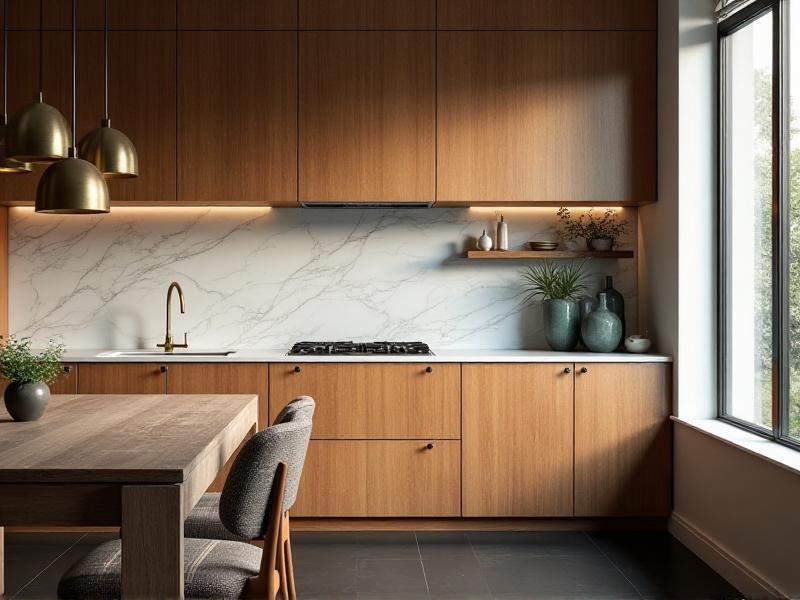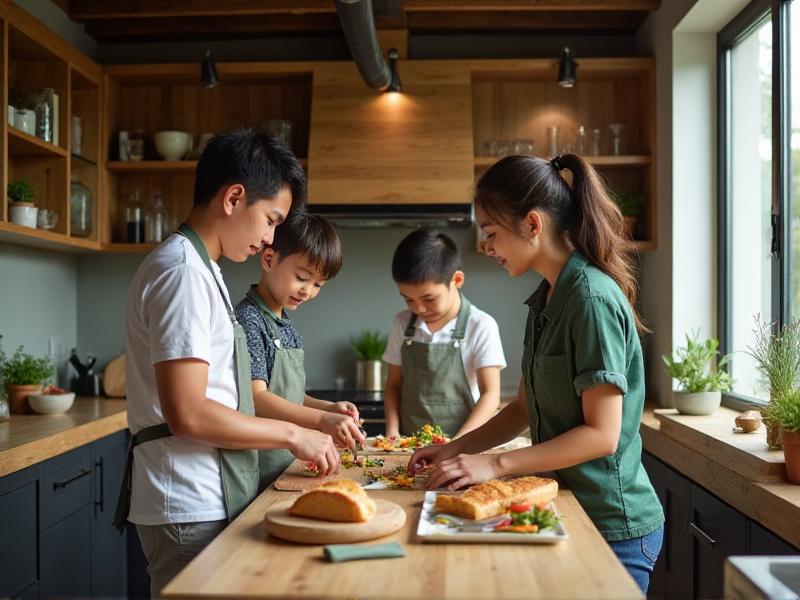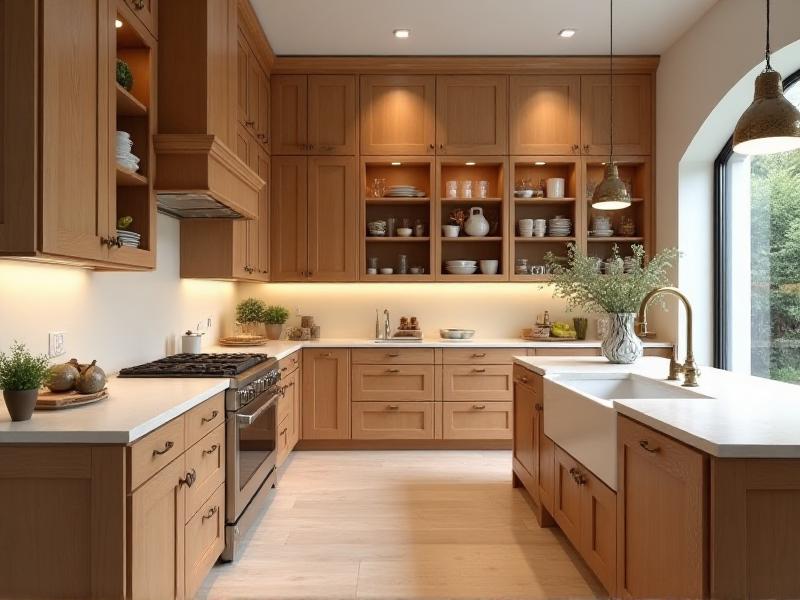1. Plan Your Layout for Functionality and Flow
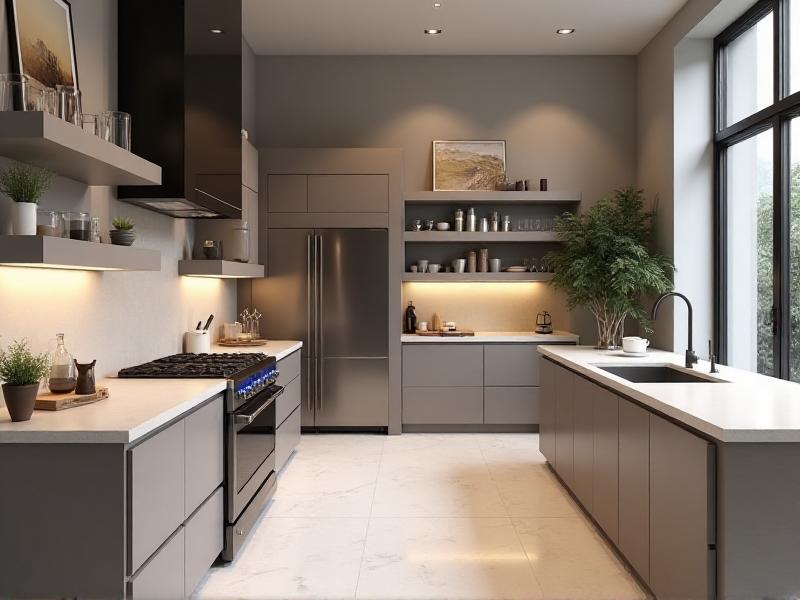
When it comes to kitchen remodeling, the layout is the foundation of a functional and aesthetically pleasing space. Professional designers emphasize the importance of the "work triangle," which connects the sink, stove, and refrigerator. This concept ensures that the kitchen is efficient and easy to navigate. Consider how you use your kitchen daily—do you need more counter space for meal prep? Would an island improve your workflow? Think about traffic flow and ensure there’s enough room for multiple people to move around comfortably. A well-planned layout not only enhances functionality but also adds value to your home.
2. Choose Timeless Materials and Finishes
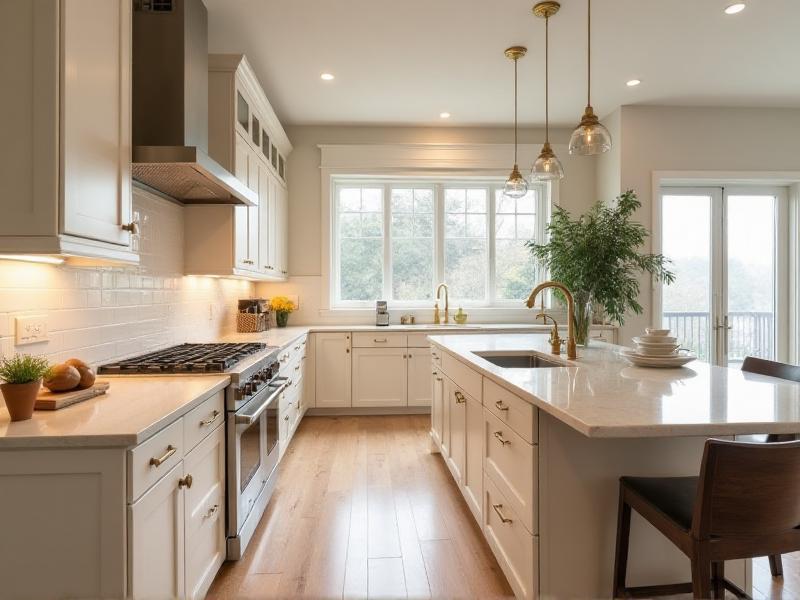
Trends come and go, but timeless materials and finishes ensure your kitchen remains stylish for years to come. Designers recommend opting for neutral colors for cabinets and countertops, such as white, gray, or beige, as they provide a versatile backdrop for any decor style. Natural materials like quartz, granite, and hardwood are durable and classic choices. For backsplashes, subway tiles or simple patterns can add texture without overwhelming the space. Investing in quality materials not only elevates the look of your kitchen but also ensures longevity, saving you money in the long run.
3. Prioritize Storage Solutions

A clutter-free kitchen is a joy to work in, and professional designers know that smart storage solutions are key. Consider incorporating pull-out pantry shelves, deep drawers for pots and pans, and vertical dividers for baking sheets. Custom cabinetry can maximize every inch of space, even in awkward corners. Open shelving is another popular option for displaying frequently used items or decorative pieces. Don’t forget about organizing smaller items like spices and utensils—drawer inserts and cabinet organizers can make a world of difference. Thoughtful storage design ensures your kitchen remains functional and visually appealing.
4. Invest in Quality Appliances
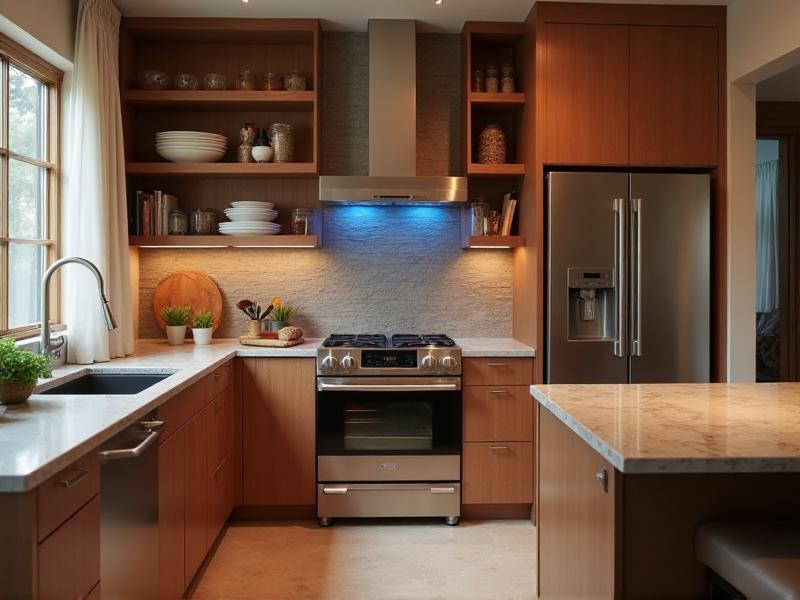
Your kitchen appliances are the workhorses of the space, so it’s worth investing in high-quality options. Professional designers recommend choosing energy-efficient models that align with your cooking habits and lifestyle. For example, if you love baking, a double oven might be a worthwhile addition. Built-in appliances can create a seamless look, while smart technology allows for greater convenience and control. Don’t forget to measure your space carefully to ensure a perfect fit. Quality appliances not only enhance your cooking experience but also add value to your home.
5. Lighting: Layer It Right
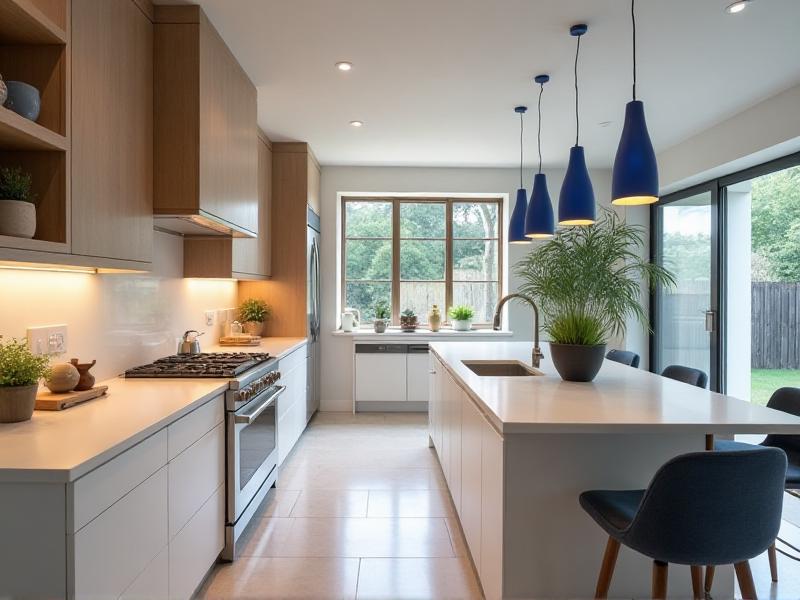
Lighting plays a crucial role in both the functionality and ambiance of your kitchen. Designers suggest incorporating a mix of task, ambient, and accent lighting. Under-cabinet lighting illuminates countertops for meal prep, while pendant lights over an island add style and focus. Recessed ceiling lights provide overall illumination, and dimmer switches allow you to adjust the mood. Natural light is also important—consider adding or enlarging windows if possible. A well-lit kitchen feels inviting and makes cooking and entertaining more enjoyable.
6. Add a Statement Backsplash
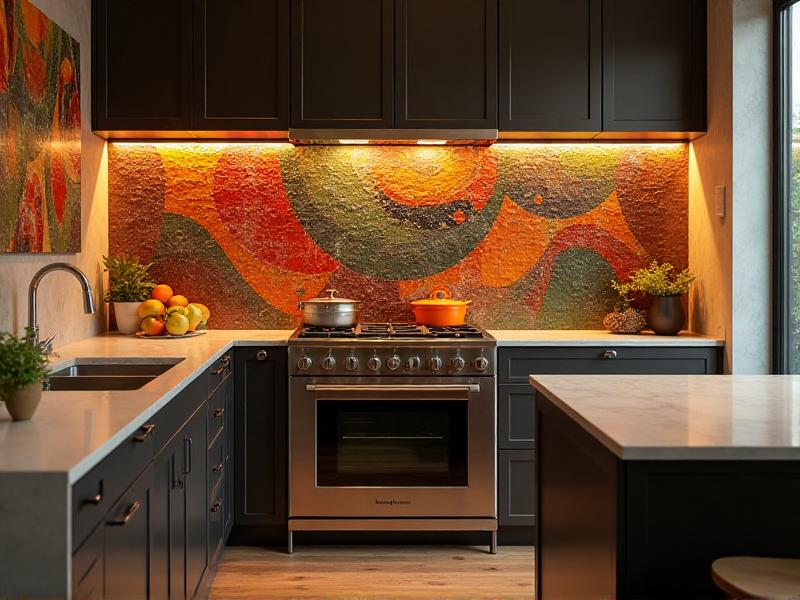
A backsplash is more than just a practical element—it’s an opportunity to inject personality into your kitchen. Designers recommend choosing a material and pattern that complements your overall design while making a statement. Bold colors, intricate patterns, or unique textures can serve as a focal point. For a cohesive look, tie the backsplash to other elements in the room, such as the countertops or flooring. Whether you opt for classic subway tiles or a modern geometric design, a well-chosen backsplash can elevate the entire space.
7. Incorporate an Island or Breakfast Bar
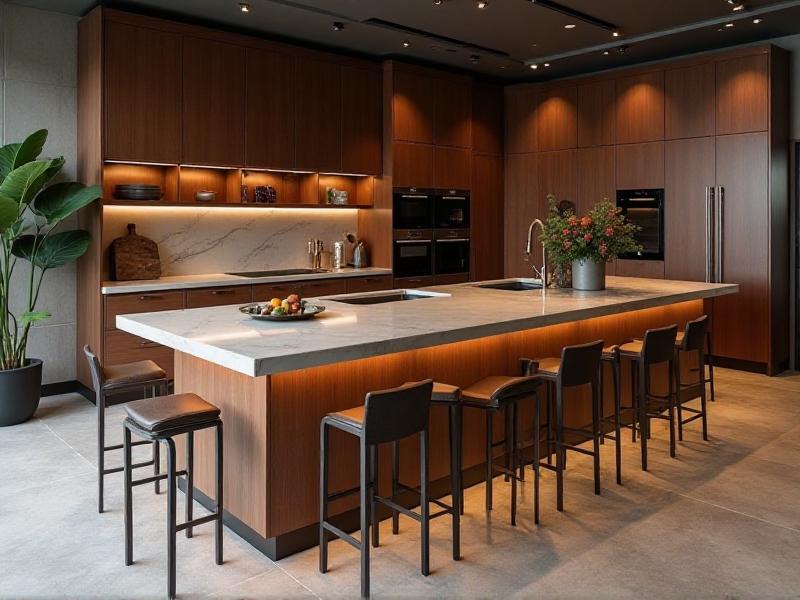
An island or breakfast bar is a versatile addition to any kitchen. It provides extra counter space for meal prep, a casual dining area, and additional storage. Designers suggest considering the size and shape of your kitchen when planning an island—ensure there’s enough room to move around it comfortably. A waterfall edge or contrasting countertop material can add visual interest. If space is limited, a small breakfast bar with stools can still offer functionality without overwhelming the room. An island or bar also creates a natural gathering spot for family and friends.
8. Don’t Overlook the Flooring
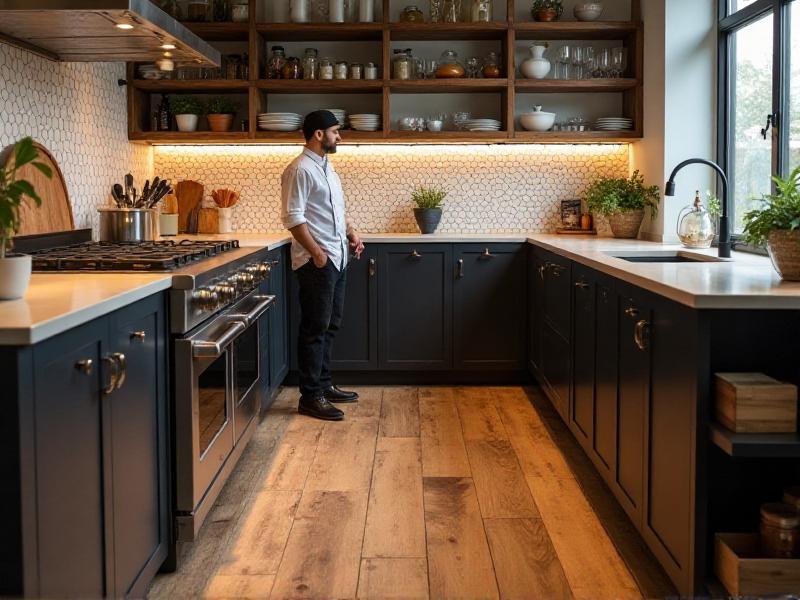
Kitchen flooring needs to be both durable and stylish, as it’s subjected to heavy foot traffic, spills, and dropped utensils. Designers recommend materials like porcelain tile, luxury vinyl, or hardwood for their resilience and aesthetic appeal. Consider the color and texture of the flooring in relation to the rest of the kitchen—lighter tones can make a small space feel larger, while darker shades add warmth. Textured or patterned flooring can hide dirt and scratches, making maintenance easier. Don’t forget to test samples in your space to see how they look under different lighting conditions.
9. Personalize with Decor and Accessories

While functionality is key, don’t forget to infuse your kitchen with personal touches that reflect your style. Designers suggest incorporating decor and accessories that add warmth and character, such as artwork, plants, or unique hardware. A colorful rug can define the space and add comfort underfoot, while open shelving allows you to display cherished items. Even small details like cabinet knobs and faucet finishes can make a big impact. Personalizing your kitchen makes it feel like a true extension of your home.
10. Work with a Professional Designer
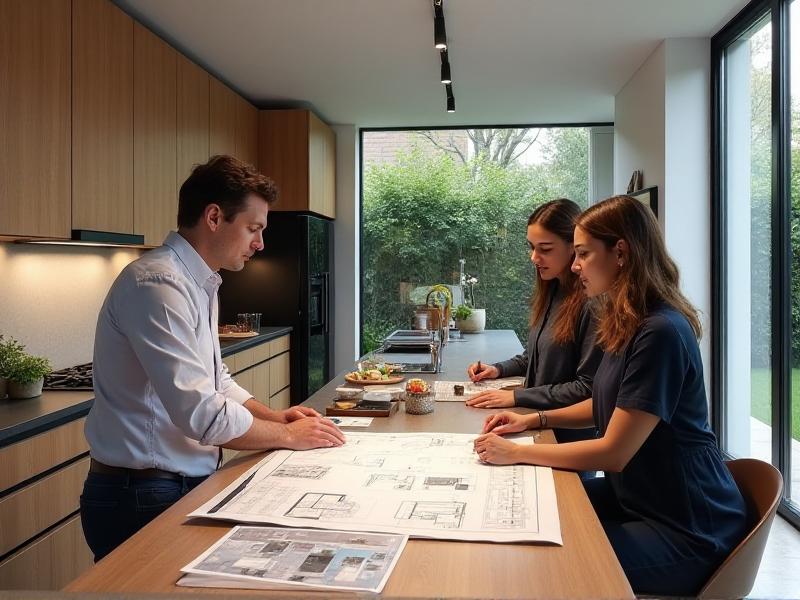
While DIY projects can be rewarding, a kitchen remodel is a significant investment that benefits from professional expertise. Designers bring a wealth of knowledge about layout, materials, and trends, ensuring your vision comes to life seamlessly. They can also help you avoid costly mistakes and navigate challenges like plumbing or electrical work. Collaborating with a designer doesn’t mean sacrificing your personal style—they’ll work with you to create a space that’s both functional and uniquely yours. The result is a kitchen that exceeds your expectations and stands the test of time.
Key Takeaways
- Plan your kitchen layout with functionality and flow in mind, focusing on the work triangle.
- Choose timeless materials and finishes to ensure your kitchen remains stylish for years.
- Prioritize smart storage solutions to keep your kitchen organized and clutter-free.
- Invest in high-quality appliances that suit your cooking habits and lifestyle.
- Layer your lighting to create a functional and inviting atmosphere.
- Use a statement backsplash to add personality and visual interest.
- Incorporate an island or breakfast bar for added functionality and social space.
- Select durable and stylish flooring that complements your kitchen’s design.
- Personalize your kitchen with decor and accessories that reflect your style.
- Consider working with a professional designer to bring your vision to life.
Frequently Asked Questions
Q: How much does a kitchen remodel typically cost?
A: The cost of a kitchen remodel varies widely depending on the scope of the project, materials, and labor. On average, a mid-range remodel can cost between $25,000 and $50,000, while a high-end remodel can exceed $75,000.
Q: How long does a kitchen remodel take?
A: The timeline for a kitchen remodel depends on the complexity of the project. A minor remodel may take 4-6 weeks, while a major overhaul can take 3-6 months or more.
Q: Can I remodel my kitchen on a budget?
A: Yes! Focus on cost-effective updates like painting cabinets, replacing hardware, or upgrading lighting. Prioritize changes that have the biggest impact, such as a new backsplash or countertops.
